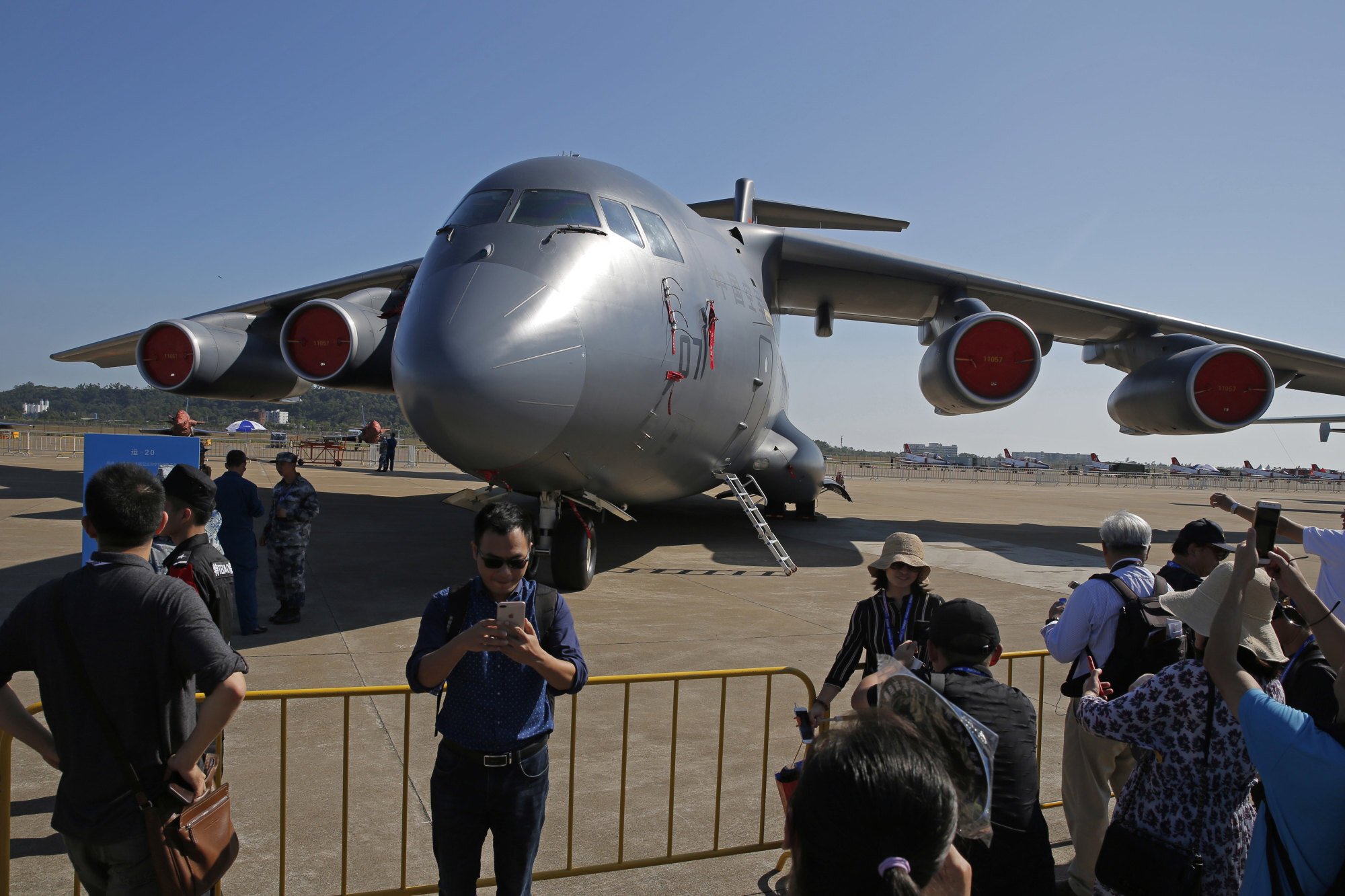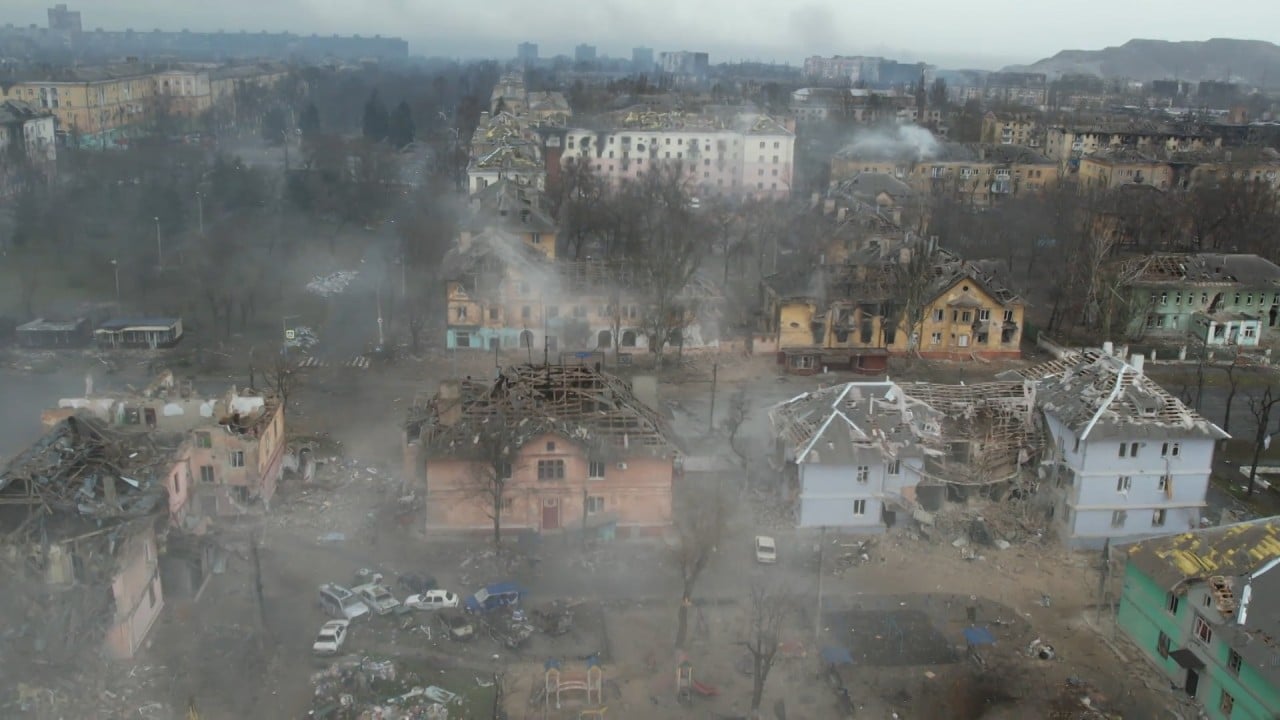
China delivered FK-3 missile system to Serbian military, state media says
- PLA Air Force reportedly sent three anti-aircraft systems in a dozen covert sorties to Russian ally Serbia at the weekend
- ‘Regular military resources’ were transported and it was not related to the ‘present state of affairs’, according to Beijing
China’s air force flew 12 covert sorties to Serbia at the weekend, which state media said delivered three Chinese anti-aircraft missile systems in the biggest overseas airlift involving its Y-20 transport planes.
Six Y-20As headed westward towards Serbia on Saturday with a stop at Baku in Azerbaijan before crossing the airspace of Nato members Turkey and Bulgaria, according to flight tracking website Flightradar24.
They were reportedly delivering the new FK-3 medium-range missile system to the Serbian military. Another group of six planes followed a similar path on Sunday.
The airlift has renewed concerns in the Balkans about the military build-up of Serbia, which is widely considered a close ally of Russia, and about Chinese military presence in the region often called “Europe’s backyard”.

“China in recent days sent air force transport aircraft to Serbia to deliver regular military resources,” Chinese foreign ministry spokesman Zhao Lijian said in Beijing on Monday, without confirming or denying whether that included the FK-3 systems.
Liang Guoliang, a Hong Kong-based military expert, said Serbia had bought three FK-3 systems from China and each needed three launcher vehicles, a radar vehicle, command vehicle and others to provide power, maintenance and additional missiles. He estimated 12 Y-20 planes would be needed to complete the delivery.
“This shows that the cargo hold design is great,” he said. “The capacity is similar to that of Russia’s Ilyushin Il-76, but its cargo compartment design could not transport that many vehicles.”
Zhou Chenming, a researcher at the Yuan Wang military science and technology institute in Beijing, said the PLA’s airlift capacity had been demonstrated during January’s relief mission to Fiji.
Two Y-20s flew from Guangzhou in southern China to Tonga via Fiji after a devastating volcano eruption, carrying supplies including food, water, tents and radio equipment – the furthest mission yet for the aircraft.
Andrei Chang, editor-in-chief of the Canadian-based monthly magazine Kanwa Asian Defence, described the airlift as unusual.
“The deployment of heavy airlift jets is not a normal delivery operation in the weapons market because Serbia is not war-torn Ukraine, which needs to acquire weapon systems immediately,” he said.
The Serbian military bought the FK-3 systems in 2019 despite warnings from the United States at the time that it could jeopardise the country’s path towards European Union membership.
China’s latest hypersonic test plane uses landing tech abandoned by Nasa
In a television interview with local media last week, Serbian President Aleksandar Vucic said the country would continue to seek integration with the EU and continue to be a neutral state militarily. Serbia has declined to take part in sanctioning Russia over its invasion of Ukraine, to the frustration of many EU and Nato members.
His trip to meet Chinese President Xi Jinping at the Beijing Winter Olympics in early February was seen as an opportunity to show that Serbia – where anti-Western sentiment runs high two decades after the Yugoslav wars ended – has powerful friends in the East.
The alleged arrival of Chinese weaponry is seen as a manifestation of what could be a tilt towards Beijing.

“The fact that you’re buying your probably most modern defence system [from China] says a lot about the level of cooperation you expect to have in the future,” said Stefan Vladisavljev, a China specialist at the Belgrade Security Forum.
“Vucic’s main messages during the election campaign were stability and peace. This can be seen as a symbolic message of: ‘You elected me to bring peace and stability and now, with this new defence system that we have bought from China, you’ve got it’.
“It’s a definite projection of Chinese power,” he added.
The EU has maintained a ban on Chinese weapons after the military crackdown in Tiananmen Square more than 30 years ago. Now, China is selling advanced arms to a candidate for EU membership, which also maintains close ties with Nato.
Nato plans permanent military presence on eastern border
The FK-3 systems would also give China a foothold in the defence market on the EU’s periphery, when the bloc is highly suspicious of Beijing for its “no-limits” friendship with Russia, said Vuk Vuksanovic, an associate specialising in Serbian geopolitics at IDEAS, a foreign policy think tank at the London School of Economics and Political Science.
“China wants to use Serbia in order to penetrate European defence markets,” Vuksanovic said. “Serbia is an EU membership candidate, but is not part of the EU’s legal system, so is quite useful partner in that regard to test whether Chinese can bypass these obstacles.”
The FK-3 is a version of the HQ-22 missile system used by the PLA Air Force intended for export. The FK-3 has only a maximum fire range of 100km (62 miles), but the HQ-22’s is 120km to 170km, according to military research group GlobalSecurity.org.
Additional reporting by Minnie Chan



